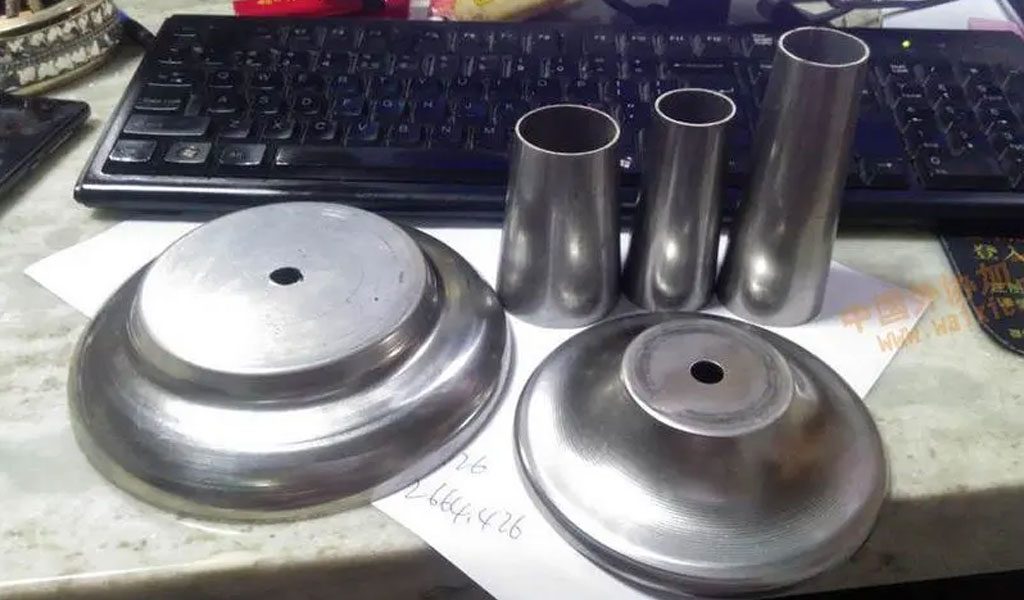Spin forming is a versatile and precise metal forming process that offers numerous benefits and applications across various industries. By utilizing rotational force and specialized tooling, spin forming enables the shaping of sheet metal into complex, seamless, and dimensionally accurate components. This article delves into the world of spin forming, exploring its process, advantages, applications, and considerations.

Understanding Spin Forming – What Is Spin Forming
Spin forming is a versatile metal forming process that involves the shaping of sheet metal into complex, seamless, and dimensionally accurate components. By utilizing rotational force and specialized tooling, spin forming enables the production of a wide range of parts with varying shapes, sizes, and geometries. In this section, we will delve into the process of spin forming, its historical evolution, and the technological advancements that have shaped its current practices.
A. Definition and Process Overview Of Spin Forming
Spin forming, also known as spin turning or metal spinning, is a metal forming technique that involves the use of rotational force to shape sheet metal into cylindrical or axisymmetric components. The process utilizes a lathe-like machine equipped with specialized tooling to shape the metal through plastic deformation.
B.Basic Process Steps
The spin forming process typically involves the following steps:
- Material Preparation: A flat sheet metal blank, usually in the form of a disk, is selected based on the desired part specifications.
- Clamping: The blank is securely clamped onto a rotating spindle or mandrel that is mounted on the spinning machine.
- Tooling and Tool Movement: A combination of spinning tools, such as rollers or mandrels, is used to apply pressure to the rotating blank, gradually deforming it to the desired shape.
- Plastic Deformation: The application of pressure and rotational motion causes the metal to undergo plastic deformation, stretching and forming it into the desired shape.
- Finishing and Trimming: Once the desired shape is achieved, the excess material is trimmed or removed, and any necessary finishing operations, such as polishing or surface treatment, are performed.
C. Historical Evolution of Spin Forming
Spin forming has a long history dating back to ancient civilizations, where artisans used manual spinning techniques to shape metal objects. Over time, the process evolved, and the advent of industrialization brought about the use of machines and specialized tooling to enhance efficiency and precision.
In the 19th and 20th centuries, advancements in technology and manufacturing processes further improved spin forming. The introduction of electric motors, enhanced machine controls, and advanced materials expanded the possibilities of spin forming, allowing for the production of larger and more complex parts with higher precision.
Today, spin forming has become an integral part of various industries, including LED Lighting,Art and Crafts,Toy(Metal Spun Top Toy), Automotive, Aerospace, Architecture, Design and more. Its versatility, efficiency, and ability to create unique shapes make it a valuable manufacturing technique for a wide range of applications.

By understanding the process and historical evolution of spin forming, manufacturers and engineers can appreciate the rich heritage of this technique while leveraging its capabilities to achieve precise and complex metal components. The next section will delve into the scientific principles underlying spin forming and the considerations involved in material selection and tooling.
The Science Behind Spin Forming
By understanding the science behind spin forming, manufacturers and engineers can optimize the process and achieve the desired outcomes. In this section, we will explore the key scientific principles that govern spin forming, including centrifugal force, plastic deformation, and material behavior.
A.Materials Suitable for Spin Forming
Spin forming offers versatility in working with a range of materials, each with its unique properties and characteristics. While not all materials are suitable for spin forming, there is a selection of commonly used materials that demonstrate good formability and compatibility with the process. In this section, we will explore some of the materials suitable for spin forming and considerations for material selection.
Common Materials Used in Spin Forming
- Aluminum Alloys: Spun Aluminum and its alloys are widely used in spin forming due to their excellent formability, lightweight nature, and corrosion resistance. Alloys such as 6061, 5052, and 1100 are frequently employed for their favorable mechanical properties and ease of deformation.
- Stainless Steel: Spun Stainless steel is another popular material for spin forming. Its inherent strength, corrosion resistance, and aesthetic appeal make it suitable for various applications. Common stainless steel alloys like 304, 316, and 430 are often chosen for their workability and resistance to heat and chemical exposure.
- Copper and its Alloys: Spun Copper and its alloys, including brass and bronze, possess excellent thermal and electrical conductivity. They are favored in applications requiring good heat dissipation or electrical conductivity. Copper alloys like C11000 (electrolytic tough pitch copper) and C26000 (cartridge brass) are commonly spin formed.
- Mild and Carbon Steels: Mild and carbon steels are frequently used in spin forming due to their availability, cost-effectiveness, and acceptable formability. These steels offer good strength and durability and are suitable for applications where high-strength requirements are not critical.
- Titanium and Titanium Alloys: Titanium and its alloys exhibit excellent strength-to-weight ratio, corrosion resistance, and high-temperature capabilities. Although titanium requires specialized tooling and equipment due to its higher strength, it is commonly used in aerospace, automotive, and industrial sectors where its unique properties are essential.
Considerations for Material Selection
- Formability: The material’s formability is a crucial consideration in spin forming. It should exhibit sufficient ductility to undergo plastic deformation without cracking or excessive strain hardening. Materials with good elongation and low work hardening properties are desirable for ease of shaping.
- Thickness and Workpiece Size: Thinner materials are generally more suitable for spin forming as they offer better formability and reduced springback effects. However, the process can accommodate various thicknesses based on the material’s mechanical properties and the capabilities of the spinning equipment.
- Compatibility with Tooling and Equipment: Different materials may require specific tooling and equipment to ensure proper shaping and prevent premature wear or damage. Harder materials, like titanium or stainless steel, may necessitate more robust tooling to withstand the forces involved in spin forming.
- Application Requirements: Consider the application-specific requirements when selecting the material. Factors such as desired mechanical properties, corrosion resistance, thermal conductivity, and aesthetic appearance should be taken into account.
It is crucial to consult material suppliers, engineers, or spin forming experts to determine the most suitable material for specific applications. Testing and prototyping can also help evaluate the formability and performance of different materials before full-scale production.
By carefully considering the material properties and their compatibility with the spin forming process, manufacturers can achieve high-quality and precise components that meet the desired functional and aesthetic requirements.
B. Centrifugal Force and Radial Stress
- Rotational Motion:In spin forming, the workpiece rotates rapidly around its central axis. This rotational motion generates centrifugal force, which acts perpendicular to the axis of rotation. The centrifugal force creates radial stress within the workpiece, causing it to deform outward.
- Radial Stress Distribution:The centrifugal force induces compressive stresses on the inner regions of the workpiece and tensile stresses on the outer regions. This stress distribution enables the material to undergo plastic deformation and take on the desired shape.
C. Plastic Deformation and Metal Flow
- Plastic Deformation:Spin forming involves the plastic deformation of the metal, which is the permanent change in shape that occurs when a material is subjected to external forces. Plastic deformation occurs due to the movement and rearrangement of metal atoms within the material’s crystalline structure.
- Metal Flow:As the workpiece rotates and the spinning tools apply pressure, the metal undergoes controlled plastic deformation. The metal atoms slide past each other, allowing the material to flow and take on the shape of the forming tools. This metal flow is influenced by the stress distribution and the material’s properties.
D. Material Behavior and Properties
- Ductility:Ductility refers to a material’s ability to deform under tensile stress without fracturing. In spin forming, materials with high ductility are preferred as they can undergo significant plastic deformation without failure.
- Work Hardening:Work hardening, also known as strain hardening, occurs when a material is plastically deformed. It leads to an increase in the material’s strength and hardness as a result of dislocation movement and rearrangement within the crystal structure. Work hardening can affect the material’s formability during spin forming.
- Anisotropy:Some materials, particularly those with a crystal structure, exhibit anisotropic behavior. Anisotropy means that the material’s properties, such as strength or ductility, vary depending on the direction of applied stress. Understanding the anisotropic nature of the material helps in determining the appropriate spinning technique and tooling design.
- Springback:Springback refers to the elastic recovery of the material after the external forces are removed. During spin forming, the material experiences elastic deformation, which can result in slight shape distortions when the forming forces are released. Consideration of springback is crucial to achieve the desired final dimensions.
By considering the principles of centrifugal force, plastic deformation, and material behavior, manufacturers can optimize the spin forming process. Material selection, tool design, and process parameters can be tailored to the specific material properties and behavior, ensuring successful and efficient component production.
It is essential to combine the knowledge of the underlying science with practical experience and experimentation to achieve the desired outcomes in spin forming. Continual refinement and understanding of the scientific principles enable manufacturers to push the boundaries of the process and achieve precise and high-quality components.
The Advantages of Spin Forming
Spin forming offers numerous advantages that make it a preferred choice for metal forming applications. From the ability to create complex shapes to cost efficiency, spin forming provides several benefits over other manufacturing processes. In this section, we will explore the advantages of spin forming in detail.
A. Complex Geometries and Seamless Components
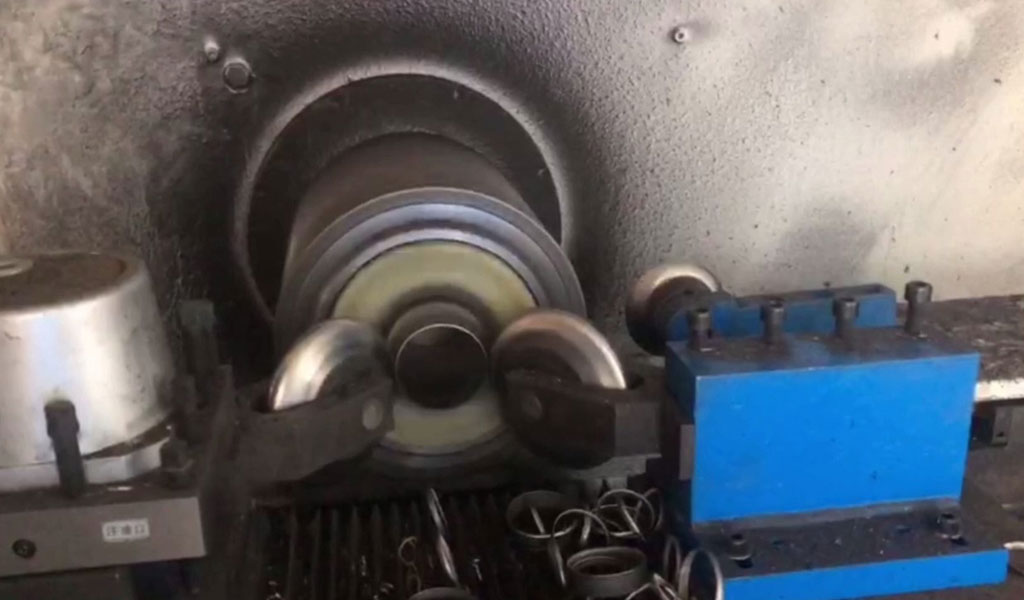
- Shaping of Intricate Shapes: Spin forming enables the creation of intricate and complex geometries that may be challenging to achieve with other manufacturing processes. The rotational motion and specialized tooling allow for the precise control of material flow, facilitating the formation of intricate curves, contours, and surface details.
- Seamless Construction: Spin forming eliminates the need for additional joining or welding operations. The process produces seamless components by utilizing a single sheet of material, reducing the risk of structural weaknesses, and enhancing the overall integrity of the part.
B. Dimensional Accuracy and Consistency
- Tight Tolerances: Spin forming can achieve tight dimensional tolerances, ensuring that the final components meet the required specifications. The precise control of tooling movements, material flow, and the rotational speed of the workpiece contribute to maintaining consistent dimensions throughout the forming process.
- Repeatable Results: Spin forming offers excellent repeatability, producing consistent results across multiple production runs. The combination of controlled parameters and automated processes ensures that each formed component closely matches the desired specifications, reducing variability and minimizing rework.
C. Material Optimization and Cost Efficiency
- Reduced Material Waste: Spin forming minimizes material waste compared to other forming processes. The use of a single sheet of material reduces scrap and allows for optimal material utilization, resulting in cost savings and reduced environmental impact.
- Lower Production Costs: Spin forming offers cost efficiency in terms of production. The process requires relatively simple tooling and equipment compared to other metal forming methods, leading to reduced tooling costs and faster setup times. The ability to form complex shapes in a single operation also eliminates the need for multiple manufacturing steps, further streamlining production and reducing labor costs.
D. Versatility and Design Flexibility
- Wide Range of Materials: Spin forming is compatible with various materials, including aluminum, stainless steel, copper, and more. This versatility allows manufacturers to choose the material that best suits the application’s requirements in terms of strength, durability, corrosion resistance, or thermal properties.
- Design Freedom: Spin forming provides design flexibility, enabling the realization of unique and customized components. The process allows for the creation of one-of-a-kind designs, as well as the ability to replicate specific shapes consistently. Design modifications and iterations can be easily implemented, facilitating product development and customization.
Spin forming’s advantages make it a preferred choice in industries such as aerospace, automotive, architecture, and design. The ability to create complex shapes, maintain tight tolerances, optimize material usage, and achieve cost efficiency sets spin forming apart as a versatile and reliable metal forming process. By leveraging these advantages, manufacturers can produce high-quality components that meet the stringent requirements of diverse applications.
The Applications Of Spin Forming
Spin forming finds applications in a wide range of industries and sectors due to its versatility, precision, and ability to create complex shapes. The process is utilized in various applications where seamless, dimensionally accurate, and aesthetically pleasing components are required. In this section, we will explore some of the key industries and sectors where spin forming is commonly employed.
A.Spin Forming For Automotive Industry
- Exhaust Systems and Mufflers: Spin forming is used to manufacture exhaust systems and mufflers due to its ability to create seamless and precisely formed components. The process ensures optimal flow characteristics, noise reduction, and structural integrity.
- Fuel Tanks and Housings: Spin forming is utilized in the production of fuel tanks and housings for automobiles. The process allows for the creation of complex shapes while maintaining tight tolerances and structural integrity, ensuring safety and performance.
B.Spin Forming For Aerospace and Defense Sector
- Rocket Nozzles and Engine Components: Spin forming is employed in the aerospace industry to produce rocket nozzles, engine components, and other critical parts. The process enables the creation of complex geometries required for optimal performance and reliability in space exploration and propulsion systems.
- Satellite Antennas and Reflectors: Spin forming is used in the fabrication of satellite antennas and reflectors. The process allows for the production of large, seamless, and precisely formed components that are crucial for achieving optimal signal reception and transmission in space-based communication systems.
C.Spin Forming For Architectural and Design Applications
- Lighting Fixtures and Reflectors: Spin forming is utilized in the production of lighting fixtures and reflectors. The process enables the creation of intricate designs, seamless construction, and precise optical surfaces, resulting in efficient light distribution and aesthetic appeal.
- Decorative Panels and Artistic Sculptures: Spin forming is employed to create decorative panels and artistic sculptures in architectural and design applications. The process offers design flexibility, allowing for the realization of unique and visually appealing forms, textures, and patterns.
D.Spin Forming For Industrial Manufacturing
- Pressure Vessels and Tanks: Spin forming is utilized in the production of pressure vessels and tanks used in various industrial applications. The process ensures the creation of seamless and structurally sound containers capable of withstanding high-pressure environments.
- HVAC Components: Spin forming is employed in the manufacturing of HVAC (Heating, Ventilation, and Air Conditioning) components, such as air ducts and diffusers. The process allows for the creation of custom shapes, precise dimensions, and smooth surfaces, ensuring optimal airflow and energy efficiency.
These applications represent just a fraction of the wide-ranging industries and sectors where spin forming finds utility. The process’s ability to create complex shapes, maintain tight tolerances, and produce seamless and dimensionally accurate components makes it an invaluable manufacturing technique across diverse fields. As technology advances and new materials and design possibilities emerge, spin forming continues to play a vital role in meeting the evolving needs of various industries.
Considerations and Challenges in Spin Forming
Spin forming, like any metal forming process, comes with its own set of considerations and challenges that manufacturers need to address to ensure successful outcomes. Understanding these factors is crucial for optimizing the process and achieving the desired results. In this section, we will explore some of the key considerations and challenges in spin forming.
A. Material Thickness and Workpiece Size
- Limitations and Guidelines: The thickness of the sheet metal used in spin forming can impact the process. Thicker materials require higher forming forces and may necessitate additional tooling considerations. Manufacturers should consider the limitations and guidelines provided by material suppliers to ensure successful forming.
- Impact on Forming Processes: Thinner materials generally offer better formability and require lower forming forces. However, thinner materials may also be more prone to distortion or buckling during the forming process. Balancing the material thickness with the desired shape and structural integrity is important.
B. Tooling Design and Maintenance
- Importance of Precision Tooling: High-quality and precise tooling is essential for achieving accurate and repeatable results in spin forming. The design of the tooling, including mandrels, rollers, and support structures, should match the desired component shape and maintain proper alignment throughout the forming process.
- Regular Maintenance for Optimal Performance: As with any manufacturing process, regular maintenance of the spin forming equipment and tooling is crucial. Regular inspection, cleaning, and repair of worn or damaged tooling components ensure consistent performance and prolong the life of the tooling.
C. Process Optimization and Control
- Variables and Parameters to Monitor: Various process parameters, such as rotational speed, tool pressure, and lubrication, need to be carefully controlled and monitored during spin forming. Adjusting these parameters can affect the material flow, thickness distribution, and surface finish of the formed component. Process optimization involves identifying the optimal parameter range for specific materials and component designs.
- Quality Control and Inspection: Quality control is crucial in spin forming to ensure the components meet the required specifications. Inspection methods, such as dimensional measurement, surface analysis, and material testing, should be employed to validate the formed components and identify any deviations or defects.
D. Material Behavior and Formability
- Anisotropy: Some materials, especially those with a crystalline structure, exhibit anisotropic behavior, meaning their mechanical properties vary with the direction of applied stress. Understanding the anisotropic nature of the material helps in selecting appropriate spinning techniques and tooling design to optimize formability.
- Springback: Springback refers to the elastic recovery of the material after forming forces are released. It can lead to dimensional variations in the final component. Manufacturers must consider springback and adjust tooling or process parameters accordingly to achieve the desired final dimensions.
E. Operator Skill and Training
- Skilled Operators: Spin forming requires skilled operators who possess a deep understanding of the process, material behavior, and tooling requirements. Proper training and experience ensure effective handling of the equipment, monitoring of process parameters, and troubleshooting any issues that may arise during forming.
- Continuous Improvement and Knowledge Sharing: Continuous improvement initiatives and knowledge sharing among operators and engineers help refine the spin forming process. Sharing best practices, lessons learned, and implementing feedback loops contribute to process optimization and enhanced product quality.
By addressing these considerations and challenges, manufacturers can overcome potential hurdles in spin forming and optimize the process to achieve high-quality and precise components. A thorough understanding of the materials, tooling design, process parameters, and operator skills plays a vital role in ensuring successful outcomes in spin forming.
Future Trends and Innovations
Spin forming continues to evolve with advancements in technology, materials, and process optimization. As manufacturers and researchers explore new possibilities, several future trends and innovations are emerging in the field of spin forming. This section discusses some of the key trends and innovations that are shaping the future of spin forming.
A. Advanced Materials and Alloys
- Exploration of New Material Possibilities: Research and development efforts are focused on exploring new materials and alloys for spin forming applications. This includes advanced high-strength materials, lightweight alloys, and composite materials that offer enhanced mechanical properties, improved corrosion resistance, and tailored characteristics for specific applications.
- Enhanced Performance Characteristics: The use of advanced materials in spin forming opens up opportunities for components with superior performance characteristics. These materials can offer improved strength-to-weight ratios, higher temperature resistance, enhanced wear resistance, and increased durability, expanding the application possibilities of spin-formed components.
B. Automation and Robotics in Spin Forming
- Improved Production Efficiency: The integration of automation and robotics into spin forming processes can lead to increased production efficiency. Automated systems can handle tasks such as material feeding, tool changes, and process monitoring, reducing human intervention and increasing overall productivity.
- Integration of AI and Machine Learning: Artificial intelligence (AI) and machine learning techniques can be utilized to optimize process parameters, predict material behavior, and identify potential defects or deviations. By analyzing large datasets and real-time process data, AI can enhance process control and quality assurance in spin forming.
C. Advancements in Tooling and Equipment
- Enhanced Tooling Designs: Innovations in tooling design can lead to improved performance and increased efficiency in spin forming. Advanced tool materials, coatings, and surface treatments can enhance tool life, reduce friction, and improve material flow, resulting in higher-quality components and reduced production costs.
- Flexible and Adaptive Tooling Systems: The development of flexible and adaptive tooling systems enables the production of a wider range of component shapes and sizes. These systems can be adjusted or reconfigured to accommodate different part geometries, reducing the need for extensive tool changes and setup times.
D. Process Optimization and Control
- Advanced Process Monitoring and Control: The integration of advanced sensors and real-time monitoring systems allows for better process control and quality assurance in spin forming. This includes monitoring parameters such as rotational speed, tool pressure, temperature, and material flow, ensuring consistent and repeatable results.
- Simulation and Modeling: Computer simulations and modeling techniques are being utilized to optimize the spin forming process. By simulating the material flow, stress distribution, and forming behavior, engineers can optimize tooling designs, predict springback effects, and optimize process parameters, leading to improved component quality and reduced development time.
E. Sustainable Practices and Material Recycling
- Sustainable Material Selection: With a growing focus on sustainability, spin forming is likely to see an increased emphasis on the selection of eco-friendly and recyclable materials. Manufacturers are exploring materials that offer a reduced environmental footprint while maintaining performance and functionality.
- Material Recycling and Waste Reduction: Efforts to minimize material waste and optimize material utilization will continue to be a priority in spin forming. Improved material recycling techniques and waste reduction strategies can help reduce the environmental impact and enhance the sustainability of the spin forming process.
These future trends and innovations in spin forming are driven by the increasing demand for advanced materials, higher production efficiency, and sustainability. By embracing these developments, manufacturers can unlock new possibilities, enhance component performance, and meet the evolving needs of various industries. The continued integration of technology, research, and collaboration will shape the future of spin forming and its role in the broader field of metal forming.
Custom Spin Forming Service Online
Spin forming is a versatile metal forming process that combines scientific principles with precision engineering. Its ability to create complex shapes, maintain dimensional accuracy, and optimize material usage has made it a preferred choice in various industries. As technology continues to advance, spin forming is poised to meet evolving demands and push the boundaries of what is achievable in metal forming.
Spin forming is a versatile metal forming process that combines scientific principles with precision engineering. Its ability to create complex shapes, maintain dimensional accuracy, and optimize material usage has made it a preferred choice in various industries. As technology continues to advance, spin forming is poised to meet evolving demands and push the boundaries of what is achievable in metal forming. By sending metal spun manufacturing requirements online, Be-Cu prototype will return the quotation immediately. We will provide you with satisfactory spin forming service and deliver the products in the shortest possible time.
Whether you choose online aluminum spinning, copper spinning, and copper spinning service, or need materials and surface finish for spinning parts, Be-Cu prototype will provide an excellent solution to your order. Be your partner from rapid prototyping to production. There are cnc metal spinning machine that can provide on-demand rapid prototyping and low-volume manufacturing customization services.
Get instant quotes now, If you are finding low-value manufacturing CNC spinning & low-cost in China. Be-Cu prototype is one of your loyal and efficient partners, We accept your online business about CNC machining, and promise to help you complete rapid prototyping, low-value and mass production business with the most professional service.
-
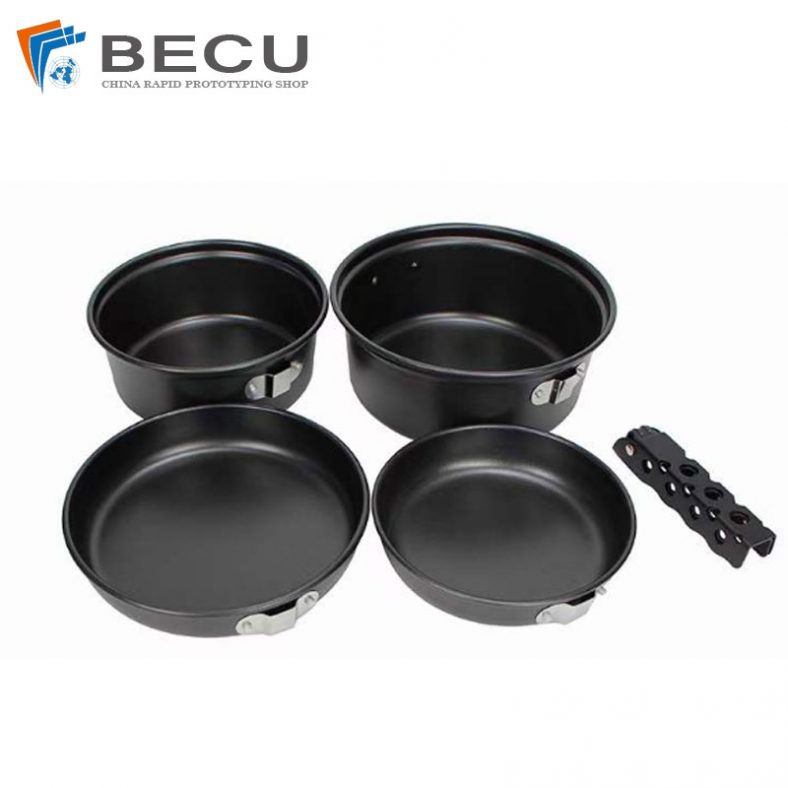
Prototype CNC Spinning Stainless Steel 316L Outdoor Camping Pot
-
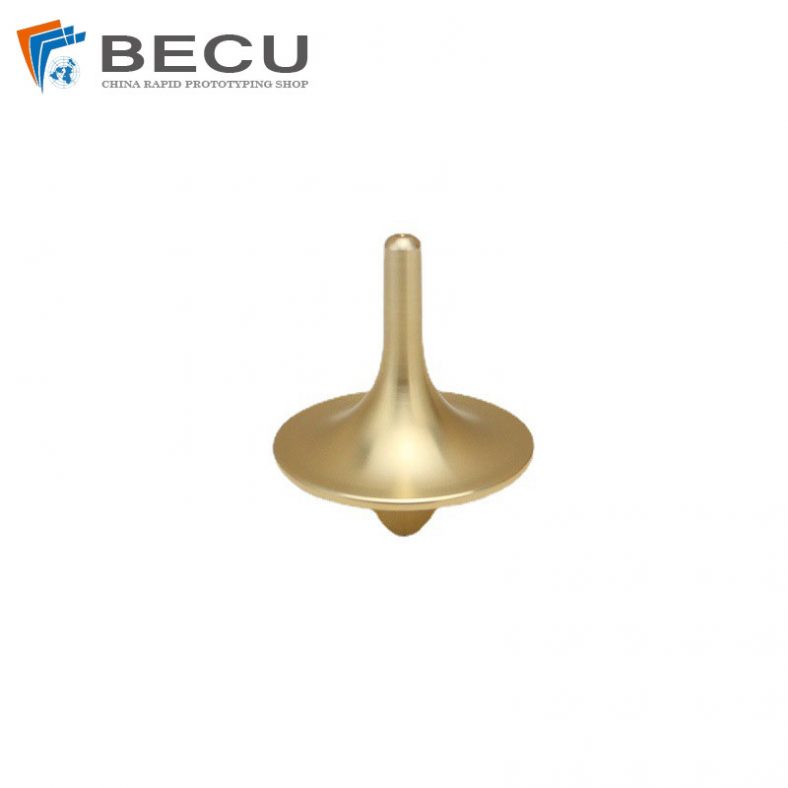
Metal Spinning Top Toy
-
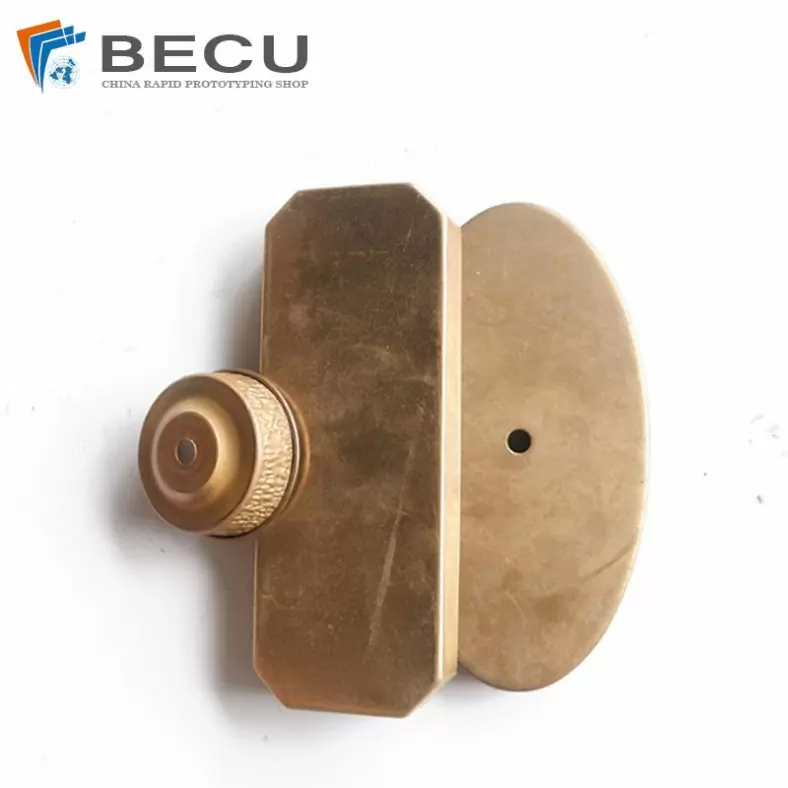
Precision CNC Spinning Art Lighting Accessories
-
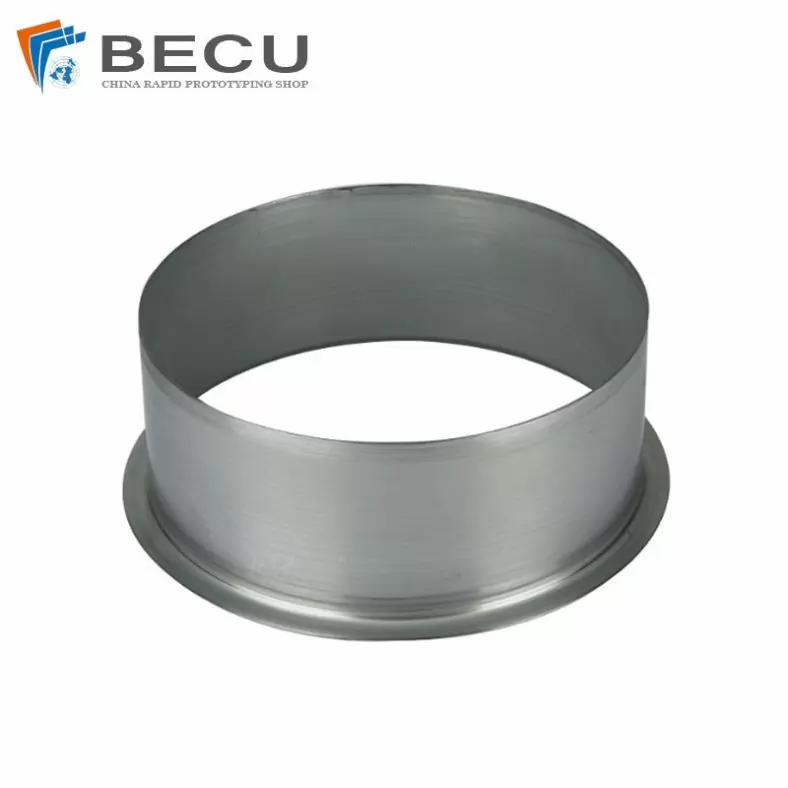
Precision Spinning Galvanized Sheet Draught Fan Accessories
-

Precision CNC Spinning 200mm Fitness Kettlebell
-

287mm Metal CNC Spinning Machinery Parts
-

Metal Spinning 350mm High Voltage Electrode Shield
-

Aluminum Spinning Parts For Automobile Shock Absorbers


